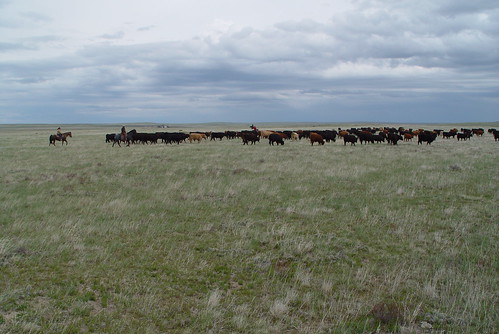
The Northern Plains Regional Climate Hub—encompassing Montana, North Dakota, South Dakota, Wyoming, Nebraska, and Colorado— has a high diversity of land use types including the largest remaining tracts of native rangeland in North America. Substantial areas of both dryland and irrigated cropland and pasture, mosaics of cropland and grassland, and forested lands can be found across the region. With the publication of the Northern Plains Regional Vulnerability Assessment, the Northern Plains Hub is providing stakeholders with an introduction to the region, regional sensitivities and adaptation strategies for working lands, a greenhouse gas emissions profile with mitigation opportunities, and an overview of how partner USDA agencies are being affected by a changing climate. This vulnerability assessment is an important first step in establishing a baseline “snapshot” of current climate vulnerabilities, and provides region-specific adaptation and mitigation strategies to increase the resilience of working lands in the region.
Ranchers, farmers and forest land owners in the Northern Plains have experienced warmer temperatures (1 to 1.5 degrees F), longer growing seasons (about a week and a half) and generally more precipitation (5 to >15 percent increases over the eastern 2/3 of this region) over the past twenty years compared to most of the 20th century. As a result, land use changes and shifts in production systems have occurred with 1) cattle increasing with stock coming in from drought-stricken areas of California and Texas/Oklahoma, and 2) displacement of wheat acres in counties in the eastern part of the Northern Plains by substantial increases in corn and soybean acres.
Projected climatic changes are expected to result in continued longer and warmer growing seasons with mountain areas most impacted, and this will alter the amount of snowpack and timing of snowmelt to impact runoff to reservoirs for irrigation use on crops, hayland, recreation, navigation, fish habitat and human consumptive use. Predicted increases in winter, spring and fall seasonal precipitation (and slightly drier summers) will result in no changes or reductions in consecutive dry days in this region, even though growing seasons will be longer and temperatures warmer. As a result, the expectation is that corn and soybeans production systems will continue to move north-northwest in the region, at further expense of wheat and small grains (e.g., barley) with expansion into southern parts of Canadian provinces of Saskatchewan and Alberta.
Increased emphasis on conservation measures and adaptation strategies will be needed to deal with vulnerabilities of altered snowpack levels with earlier snow melt that affect reservoir management for irrigation, decreases in levels of groundwater aquifers, water runoff and quality impacts from soil erosion associated with a higher frequency of downpours (high intensity rainfall) and increased pest and weed pressure for crops. Conservation efforts including mitigation strategies involving increased irrigation efficiency (i.e., more crop per drop),and new technology for subsurface irrigation, and adaptation strategies involving enhancement of soil organic matter and soil health (and as a result greater water holding capacity and enhanced nutrient cycling) by cover crops, especially mixtures involving legumes, and integrated crop-livestock systems. Additionally, genetic development of varieties through sophisticated breeding programs involving molecular approaches can help offset negative impacts of rising temperatures and drought.
To read the full report and learn more about the Northern Plains Regional Hub click here: http://climatehubs.oce.usda.gov/pdf-files/northern-plains-vulnerability-assessment
Each USDA Regional Climate Hub will be publishing a Vulnerability Assessment in 2015—stay tuned for your region in the coming months!
The Midwest and Northern Forests Regional Vulnerability Assessment can be accessed here.
